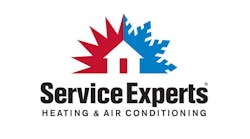A Chance Encounter with green building 10 years ago has led to rewarding and educational experiences for David Glover, Glover Plumbing & Heating Service LLC, Barrington, N.H., that have made him an energy efficiency advocate.
“Ten years ago I received a call from a customer out of the blue who wanted to install a geothermal heat pump system for his house, water-to-air for heating and cooling,” Glover said. “We took on the job and worked closely with the equipment providers, and followed all design criteria provided. In doing this system we got involved in green building before it was cool to do so.”
The company's involvement began accelerating two years ago.
“We have had opportunities to get involved in more geothermal systems, and have worked with some primarily green builders that advocate for these types of systems in their client's homes,” he said. “Also, we have been installing dual-flush toilets and installed more traditional high-efficiency systems, as well as on-demand hot water heaters and energy recovery ventilation units.
Glover says conducting energy audits is the first step to make a house more energy-efficient.
“We always advise that an energy audit be completed on existing appliances to see if they can be upgraded to a more efficient model, and to see if they can live without unnecessary items, and do tasks more efficiently. We make a point of talking about what is available as options, and the pros and cons of different systems. We have found that people have really been excited by the more efficient ways of heating and cooling their homes.”
Glover believes that broaching green options with customers is a contractor's responsibility.
“Clients have to understand the life cycle cost for less efficient systems, compared to cost of operation for a solar or geothermal system,” he said. “It is up to the professionals to educate them and give them options.
“People waste loads of power and do not even realize that it all adds up,” he said. “There are many simple things that can be done, such as insulation, weather stripping, windows, duct wrap, air leaks. We use guidelines provided by Solar Energy International, and good building practices that we have been learned over the years.”
Glover said he learned about energy-saving green building methods mainly on the job, but also has attended training provided by the supply houses and a geothermal equipment supplier.
“We have found that the systems that we have been installing for years — duct, radiant heat, etc. — are the same systems that are used to distribute the heating and cooling throughout the house with solar and geothermal systems, so that remains the same,” he noted.
Glover said that his company keeps up on energy-saving products by being alert to trends and reading books that list available products. He suggests “Green Building Products,” which lists and describes thousands of products that are available from manufacturers.
Glover's most recent project is the installation of a 16-tube solar water heating system for a greenhouse in Portsmouth, N.H., the first he has done.
“I am confident that this will be a success,” he said. “The greenhouse will be heated with radiant tubing, and a solar system will be used in the summer to heat the family pool. We are working with Oventrop and using their collector tubes to do this project.”
What is his advice for contractors interested in venturing into green building? Glover recommends reading books and going to shows where solar and geothermal equipment will be featured. Also, he suggests talking with wholesalers and asking lots of questions.
“You have to welcome a new line of equipment options for hot water, heating and cooling homes that are more energy-friendly,” he said. “Know the facts of what it costs to operate conventional systems and green systems. You will be amazed that over the life of the systems it will pay back the upfront cost. Also there are many state and federal tax credits available, so make your clients aware of those.
“I believe that the most savings and smallest carbon footprint can be achieved by becoming more efficient with what you are already using,” he said. “Everyone is becoming more educated in products and techniques. It is the future of homebuilding and renovations.”

